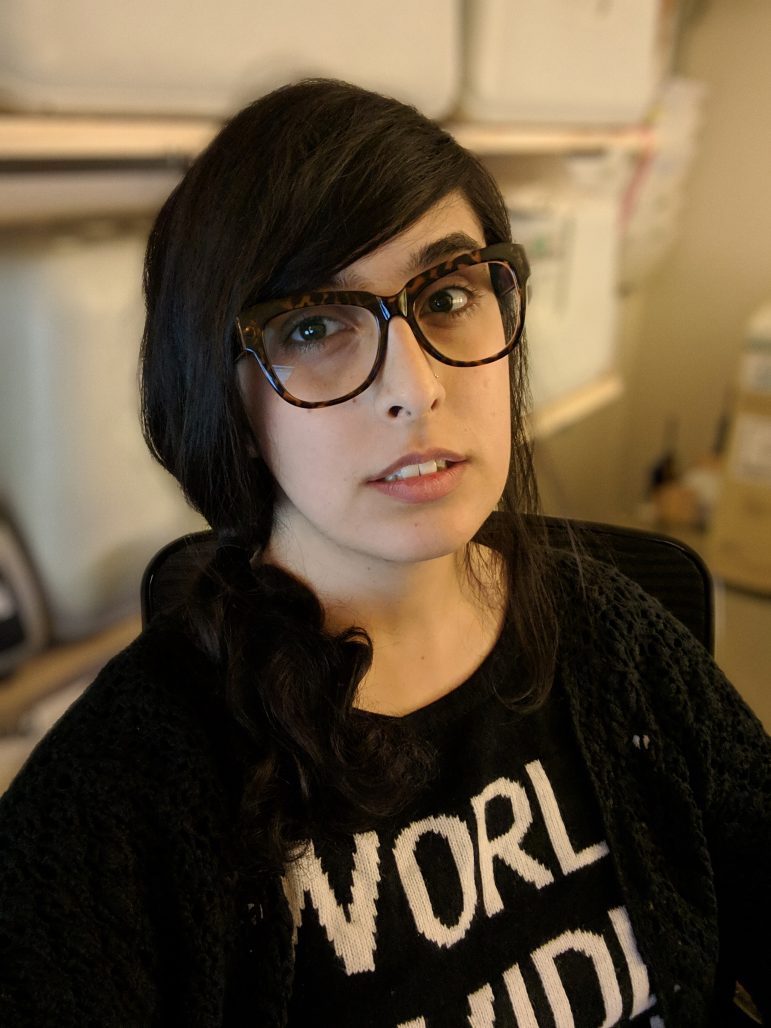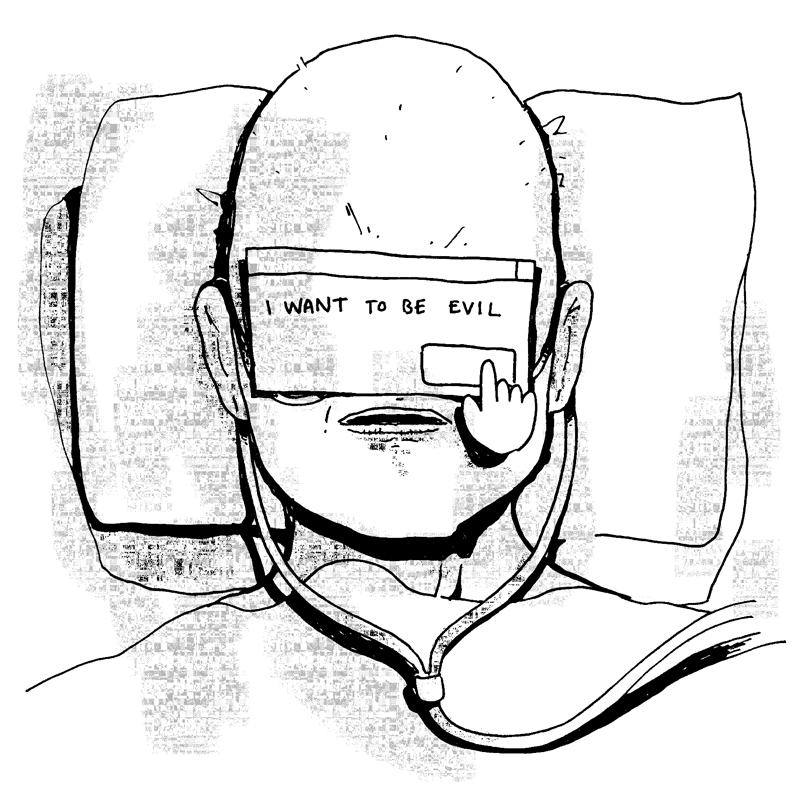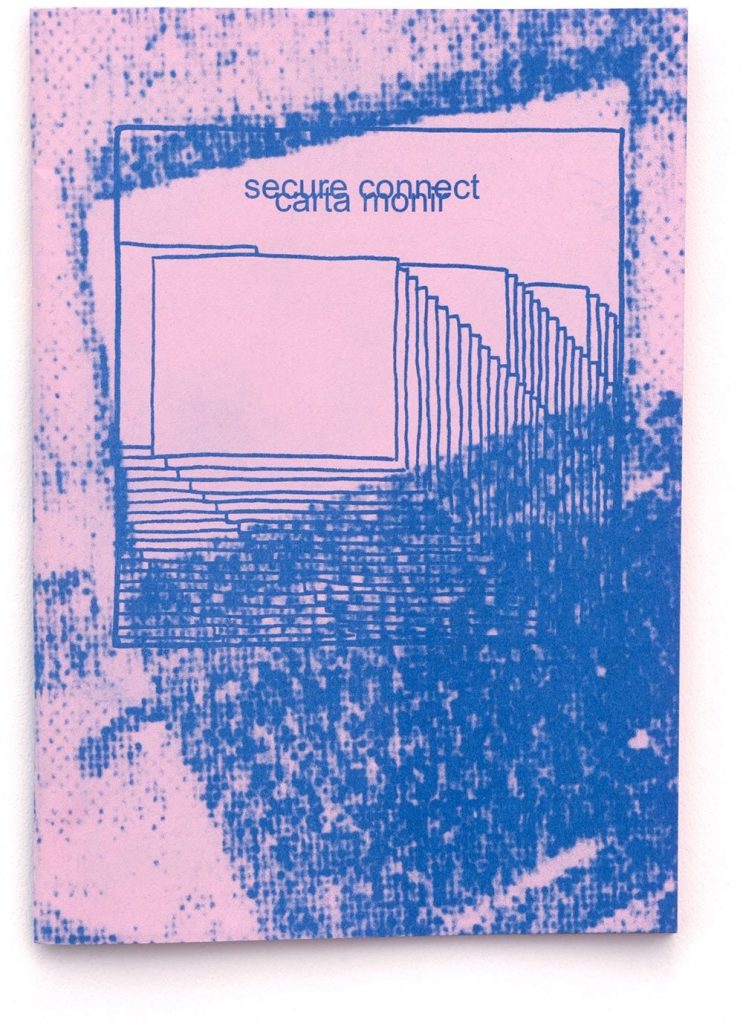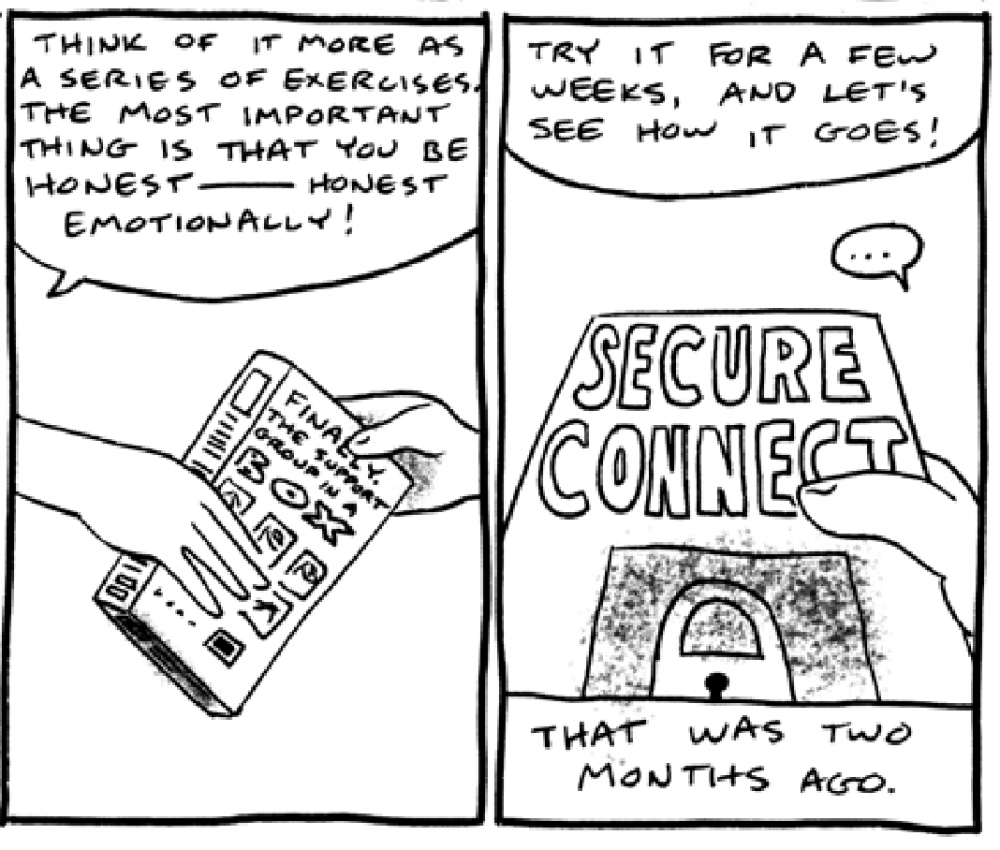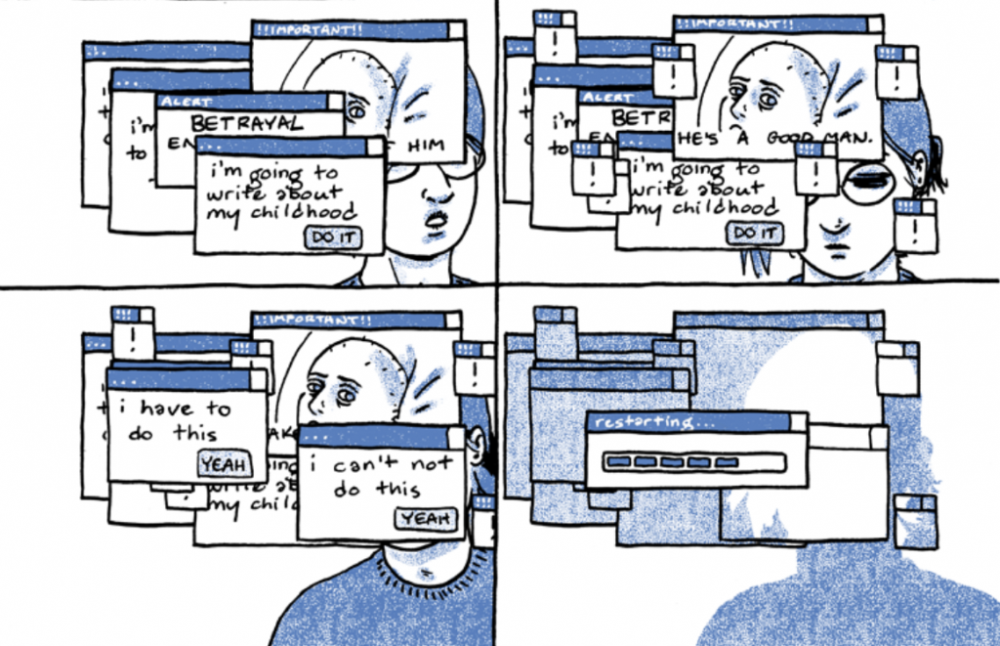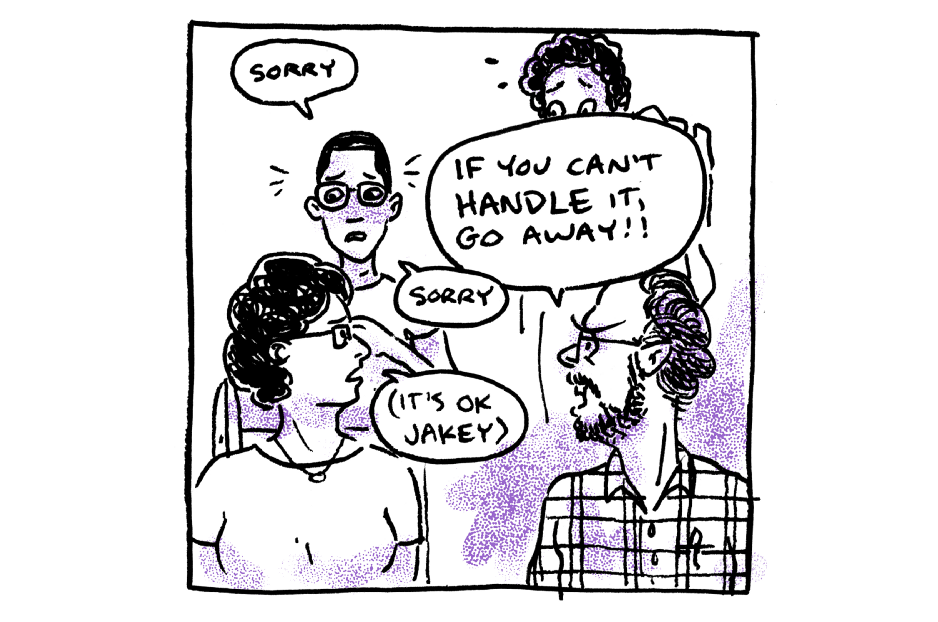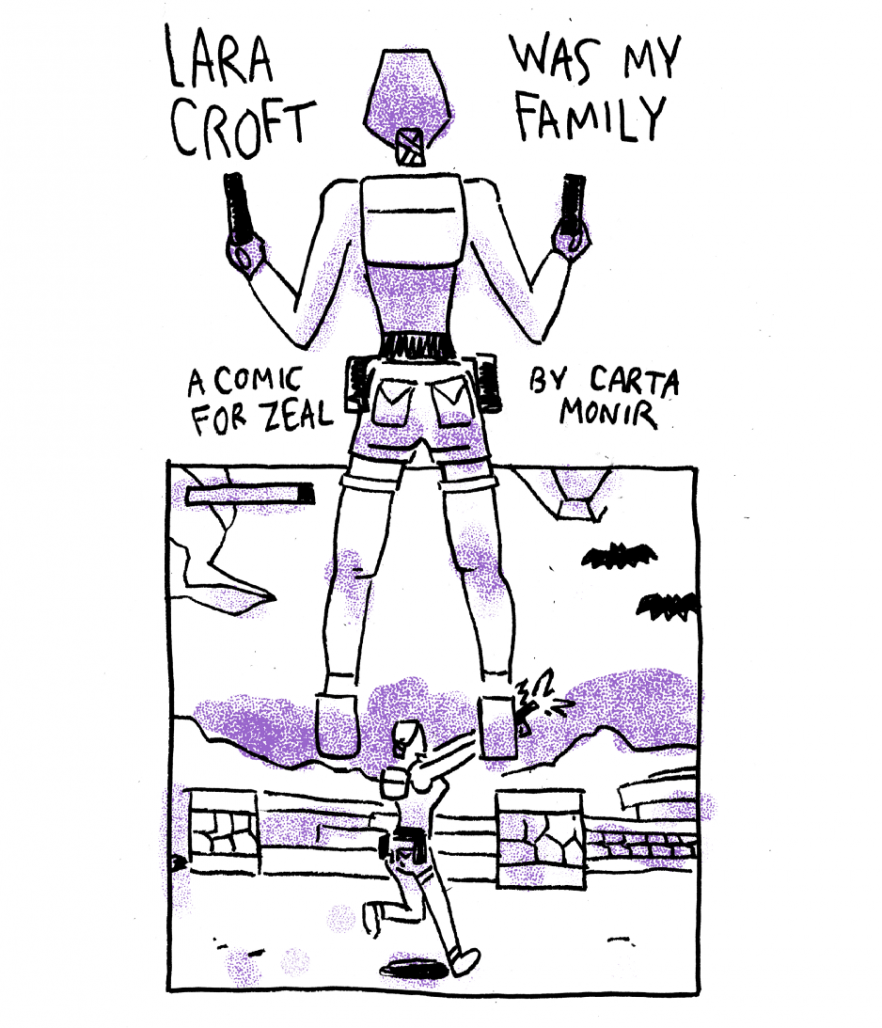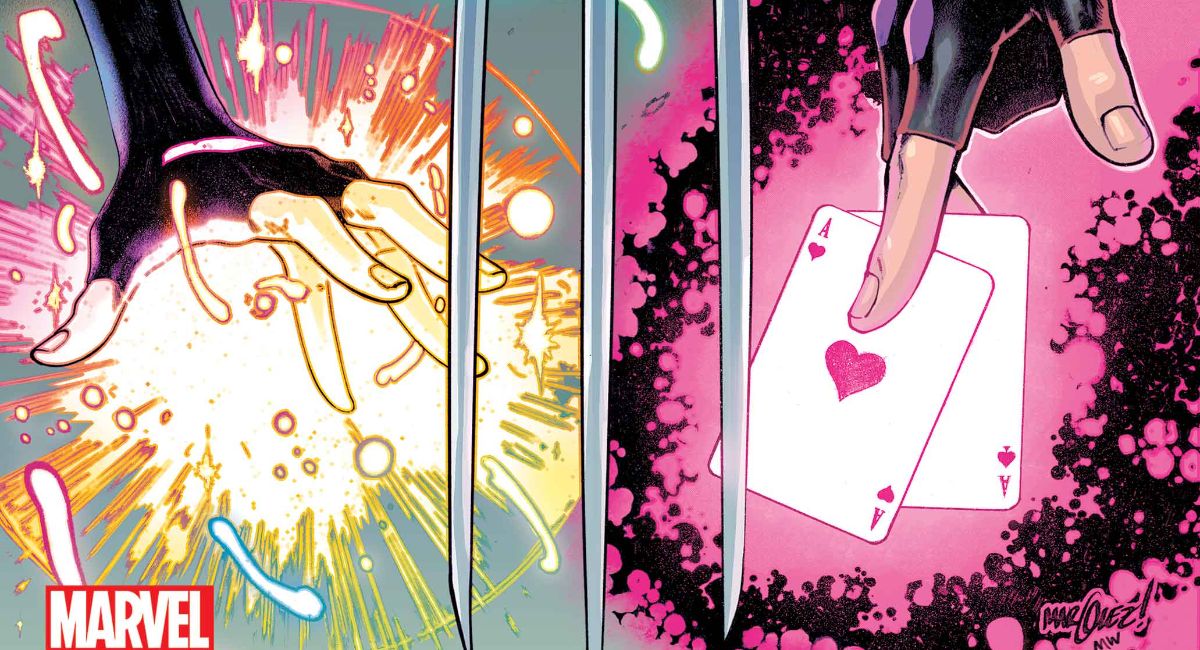Carta Monir is one of the most talented comics creator I’ve had the pleasure to meet. Her comics work has been deeply personal, and heart-wrenching. I’ve written about her comics in the past and picked her as the best cartoonist of 2017. Her work has an incredibly appealing bittersweetness to it. There’s sadness and trauma underlying most of her work, just as it has a hopefulness, a sense that there is something good when you’ve gone through adversity. I think melancholic and light is how I’ve described her comics to friends. Her comics have been featured at The Nib, Polygon, Zeal, and has appeared in multiple publications, including the Eisner-nominated comics and critics anthology Critical Chips 2 , and in Youth in Decline’s anthology Lovers Only. Her debut comic Secure Connect was published by 2dCloud in 2017 and is a fascinating look at both digital and personal identity.
Carta has had a breakout year, with more of her comics making their way online and the announce of her first long form graphic novel and the launch of her very own micro-press. She generously agreed to take some time to talk about her comics career, her comic Secure Connect, her video game comics and her newly founded micro-publisher Diskette Press.
—
PL: I think the first question I had for you is to let you describe yourself in your own words.
CM: I usually say I’m a cartoonist and podcast host. If we want to be more thorough, I’m a transgender woman. I would say I’m an artist who generally makes comics. I’m comfortable with the word cartoonist, but I do other projects sometimes. I’ve been working on comics for several years now and I would say that during the past two or three years I’ve gone from a much lower level of output to being able to do comics full time. I live with Carolyn Nowak, two-time Ignatz Award winner, Carolyn Nowak. We have a good, creative house. I live with her and my spouse EJ.
I always run out of steam when I’m describing myself!
PL: You started doing comics more regularly two or three years ago. What made you want to focus on comics?
CM: Yeah. I had I always liked comics growing up. I was one of those kids who did comics for homework. If I could make this project into a comic, I would. I went to college with the idea that I would be an art major, but I wasn’t committed enough to want to go to an art school. In my first year of college, I became the comics editor of the school paper, which sounds more impressive than it is. No one was interested in comics so I was literally the only person who wanted to do it. Then during my sophomore year, a friend and I started a student comics magazine that published roughly once every two weeks for the next three years that I was there. By the time I left, there were somewhere between 35 and 40 issues that I edited. That really gave me the taste for making comics. I really enjoyed the community of students who came together to do comics with me. It’s fun to see people read things that you make.
When I got out of college, I moved to Ann Arbor and was very fortunate to meet Carolyn Nowak. Carolyn introduced me to the professional side of comics in much more of a real way than I previously had been involved. I was reading a lot of like Michael DeForge and Rafael Grampá, people who were very popular in 2011, but I really didn’t understand what it meant to be a cartoonist. Carolyn was the one who really helped me with that. She invited me to come to SPX with her. We tabled together and that was the start of what I would consider my professional career. Just being around other cartoonists in a much more professional setting and being like “oh my God I’m bleeding so much money!!” Panicking over how people are able to afford comics or living off of comics and sort of slowly clawing my way up from there.
PL: The first printed comic I saw from you was Secure Connect that was published by 2dcloud. I read a lot of your online work too. Did you publish anything on paper other than Secure Connect?
CM: I self-published a few things before I got in with 2dcloud. Some of them… actually all of them now that I think about it, were released before I came out [as a trans woman]. So I haven’t put them back into circulation physically but there are several of them on my website. Comics like Don’t Wanna Close My Eyes and It’s a Young Boy’s Fantasy. I did a monster story called Reliquary that was very different from my current work, but it was my first time tackling a bigger project. I published a book called Breathe Not which was quite similar to my current work. It was about an abusive relationship from when I was in college. It was much more confessional work, really digging into painful emotions. Doing that book laid the groundwork for a lot of the work that I’m currently doing.
When Secure Connect was published, that was the first time that someone else had paid for my books to be printed. The print quality was obviously much higher than anything I had done before. Previously, I was just going to a print shop and getting it done on printer paper. So Secure Connect was definitely the first nice thing that I had printed. I guess since then, I’ve done mostly digital comics. I just printed a little zine for CAKE 2018.
I recently acquired a Risograph printer. I feel like I’m going to be printing a lot more stuff. It was hard for me to justify the cost of printing, before. I would go and I would drop two or three hundred dollars on printing or whatever and I would always think “well I’m going to want to give most of these away.” It was just hard for me to feel like it was worth it. But now that I have my own printer, it’s extremely worth it.
PL: So you mentioned something interesting about your comic Breathe Not. That it was the beginning of the more personal work you’ve done since. I want to go back to Secure Connect. It’s a tale of identity and people exploring it through an online forum. Can you tell me a little bit more about that story and what inspired you to use that framework?
CM: When I was working on Secure Connect, I was just on the verge of coming out publicly. And Secure Connect was going to be my big trans manifesto. It was how I was thinking of it at the time. Something that I wanted to talk about was the concept of online communities where you don’t actually know who you are talking to but you’re all sharing extremely vulnerable, personal, intimate secrets or parts of yourself. I guess that the idea for it came from online forums that young, trans people have traditionally used online to explore gender identity. If you talk to trans girls my age, a lot of them were on 4chan sort of exploring identity in this very clumsy and not ideal way, but there was nowhere else that they could find to talk about the idea of wanting to be a girl. More recently you have things like AskTransgender on reddit where young trans people can ask questions about transitioning. I find these online spaces really interesting, the idea of these friendships that can be built without necessarily knowing if the other person is who they say they are. Are they telling you the truth? Is it safe to be vulnerable with them?
So that was a lot of my inspiration going into Secure Connect. I wanted to create a distillation of that feeling. In that comic, this computer program is recommended to me by my therapist and from the beginning it’s not completely clear whether those are even real people. I wrote it before I knew anything about cybersecurity so it’s like my know-nothing fantasy version of what ludicrously involved cybersecurity might look like. If you try and take a screenshot it will automatically uninstall the whole program or if you type the wrong password it will automatically block you out forever. It wasn’t very realistic. Secure Connect was a distilled version of those online communities. The idea that everybody is unified in in a space and they’re sharing these specific feelings, dysphoria in this case. There’s also the fact that it’s an anonymous place which leads to these uncomfortable, ambiguously moral, and voyeuristic situations. As someone who grew up on the internet, you have to get used to these sorts of things. Getting used to not-knowing if the person you’re talking to online is truthful or not. You also wonder if you’re even in the right place. Many of my early experiences with the internet were trying to find interesting websites or interesting communities, but then also coming across extremely upsetting things presented with the same casualness as things that are totally benign.
PL: I know what you mean about that. My son is two and my cousins have kids, and as they’re getting older one thing we talk often about is the ease to which you can access so much information that is not necessarily for you. And when you’re looking for something you might not necessarily find it or you might find the wrong avenues to get it.
Another interesting aspect of Secure Connect is this push and pull between the characters in terms of what they want to say about themselves, what they feel comfortable saying, what they shouldn’t say and what they ultimately say.
CM: There’s that idea of these other characters ‘’presenting’’ things as true. But then you see the protagonist of the comic, the me stand-in, she uploads this picture and is conflicted about how to present it and eventually presents in an untruthful way. That also introduces this element of doubt where you wonder is these other people are telling the truth or if they’re even really the person that they say they are. I find that sort of thing very interesting.
Secure Connect is a unique comic … I wish I had been less ambiguous about some things. At that time, I didn’t even know what I wanted, necessarily. That uncertainty is very genuine. When I look at it now, all I can think is that I don’t know if I would tell a story this way anymore. My sensibilities are much closer to what I did in the Critical Chips comic. It still uses all of that interface and computer metaphor but is also, I hope, less ambiguous, requiring less study to parse the meaning of it.
PL: The Critical Chips comic is what you’ve read during 2dcloud’s AltComics event at TCAF 2017. I recall during that reading, there was an ambiguity of meaning that clarified over the course of the comic. It required a bit more involvement on the audience’s part to parse the information and it added depth to the themes of honesty and how people discern what’s truthful or not.
CM: I appreciate that. Ambiguity in storytelling is a funny thing because I very much go back and forth wondering how my readers will take the story, how much time they’ll spend engaging with it. Sometimes, readers will be very invested, but I also know that some others will read it very quickly and move on. With comics, it can feel like there’s a bit of a push and pull between showing too much or too little and having just enough. You have to remind yourself, if I show this to someone and they don’t know my work and want to just go in and read a comic, will they have the patience for this? When I made my videogame comics, those are like very much on the other side of the spectrum, there’s still ambiguity, but it’s ambiguous in the way that a poem or a short story might be ambiguous.
PL: Speaking of video games, I saw a tweet where you mentioned using a GameBoy Printer to do the cover of Secure Connect. How did you do that?
CM: For the front and back cover, I took a photo of a computer with a GameBoy Camera, and then I printed it using a GameBoy Printer which is basically a receipt printer. It prints on heat sensitive paper. There’s no ink involved. I scanned the image and blew it up. The text is done on the computer, but the image itself is from the Game Boy Camera. I liked it because it’s very stark and weird.
Something I like to do in my comics is that even though they’re very fantastical or magical in some cases, I like the implication that there could be some truth. The computer my character uses in Secure Connect is my actual laptop from the time, so having that picture of that laptop on the cover, even though it’s grainy, implies that it could be real
PL: I was floored, it’s such an interesting way to use that technology. I had never even heard of GameBoy Printers before, I knew GameBoy Cameras, but using it in this specific way was surprising. Kudos to you for that, it was really neat.
CM: Thank you. The zine that I’m bringing to CAKE this year is a GameBoy Printer zine. It’s only a short, 12-page-plus-cover zine. But all the images printed directly from the GameBoy Printer. So I’m excited for people to see that.
PL: You recently put Secure Connect on Gumroad. You mentioned online that you managed to get more money out of this than you got from your original publisher. How has that been for you, financially, to have your work be on a “pay-what-you-can” basis? Do you feel there’s a bigger impact now that you have a bigger following than when you started?
CM: To some extent I do. It’s a mix of things, like, putting it on Gumroad was really good for me because I really like “pay-what-you-want” as a model. And what I’ve found is that if you allow people to set their own price, the number of generous people offsets the number of people who just download it for cheap or for nothing. So I would say that with the several hundred downloads I’ve had, it’s probably averaged out to a couple of dollars a copy. It’s great; if I was pricing it, I wouldn’t have asked for more than a dollar. It’s to my benefit for as many people as possible to read it, especially since it’s a little older. As far as the publisher goes, I think the books sold quite well for them. They printed 500 copies and sold maybe 450? Then they experienced some pretty serious financial difficulties and weren’t able to pay royalties. I took the remaining 50 copies in lieu of payment, and was able to recuperate some costs through selling them directly. There’s not a ton of money in comics but it still feels good to have like a direct line between the work I’m doing and the money that I’m getting for it.
Moving forward, I’m working with Youth in Decline now, and I am also much more confident as a small businessperson. When I started I didn’t know anything about money, especially when it comes to running a small business, and I’ve had to learn a lot in terms of freelancing and publishing. I’m feeling like I’m in a more confident place now. I feel like I can negotiate better and have a better sense of what’s a good or bad deal. It made me extremely happy that people were still interested in Secure Connect and responding so well to it. I got to make some money off it, and it’s great because it was just sitting there and people were interested in reading it.
PL: You’re working on your first full-length graphic novel, I Want To Be Evil, with Youth in Decline. Why did you want Youth in Decline to publish your graphic novel?
CM: I just love Youth in Decline; I love the books they put out, and I love Ryan and Jane, the two publishers. Even though they’re not the biggest publisher, I really trust them to do the book right. I trust Ryan as an editor and I trust him to give me very thorough and constructive feedback. I also love the design of their books. They’re not necessarily like the largest in terms of distribution, but people know them as a publisher who makes beautiful and ambitious books and that is very much what I want to print. If I’m making an intensely personal book like this one, I want to be sure that I’m going to come out of it being proud of what I have.
Making a ton of money off of that graphic novel is not my primary goal. But, like, I also really trust Youth in Decline and their ability to market the book and do it justice.
PL: It’s going to be in safe hands.
CM: Exactly. I’m getting to work with some of my favorite people. There are just so many good artists who are part of Youth in Decline or who have been published by them before, I’m just thrilled that I get to be printed by the same publisher as Sophia Foster-Dimino, Mickey Zacchilli or Cathy G. Johnson._
PL: Can you tell us a little bit more about I Want To Be Evil or is it still in the early stages?
CM: Right now it’s still in pretty early stages but I’m happy to talk about it. It’s largely focused on the last several months of my mother’s life and the struggles that I personally went through. My mom was diagnosed with terminal cancer and then I came out to my parents as trans, and so during the time that she was dying there were these sort of parallel difficulties posed by the cancer and the treatment and the home care and family issues and all of the trans stuff, and they all interacted in a really, I don’t know what to call it, a unique way I suppose. I don’t mean that my experiences are necessarily unique, but I’ve never seen a book or a piece of media address the kind of thing that I was going through. That’s loosely what the book is about. It’s going to be longer than anything else I’ve ever done. I’m aiming for probably 180 pages. But as I said, it’s still in the early stages. We’re hoping for a release sometime in 2019, but who knows, honestly.
We’ll have to see about that release date; one of the things that I’ve been dealing with for the past several months is chronic fatigue caused by mono. That has slowed down my output to some degree. I’m hoping to cut back on the amount of freelance jobs I’m accepting and really focus on this book so that even if I have to take a bunch of naps every day I’m still able to keep up a reasonable pace.
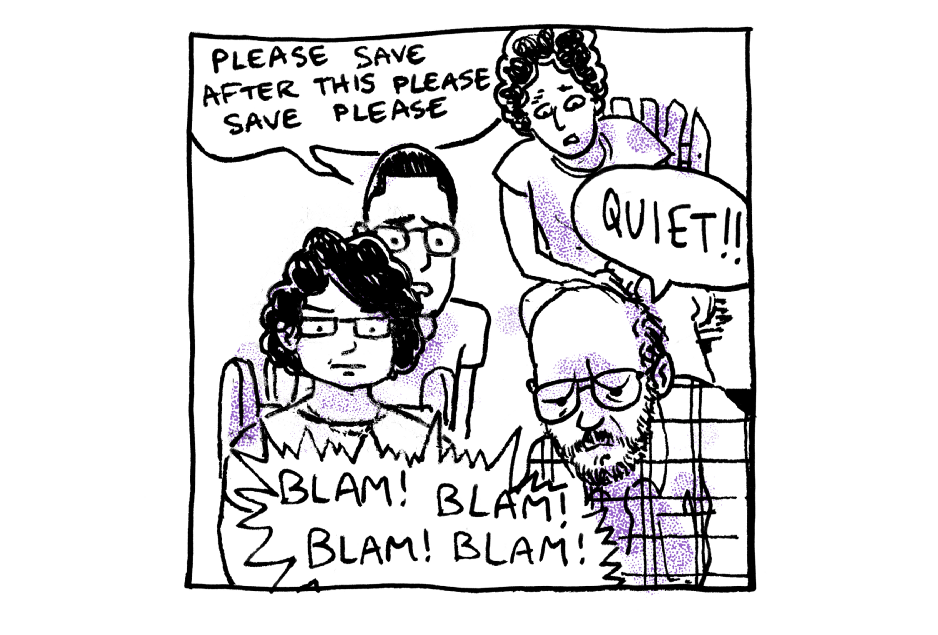
PL: I’m struggling to do an interview with you because I know a lot of the stuff that you’re writing is very personal, so if I’m asking anything that you don’t want to answer, please tell me.
CM: It’s ok, I’ll tell you.
PL: Your mom passed away in 2016. I can only imagine what you’ve gone through. My mom went through terminal pancreatic cancer and passed away in the spring, so I know you’ve had a tough time. I wonder how you manage to write such personal stories? I’m always floored when I read the work you’re doing. Your writing is so personal it must be challenging to go create, and yet you seem to do it so effortlessly and exquisitely.
CM: It took time for me to get to this point. If you look at the earlier work I did like Breathe Not, it was much more ambiguous and much more nervous and tentative. I’ve learned that, even if just a few years have passed, when I go back and look at certain work I’ve done, I see that I didn’t actually manage to say what I wanted to. I hinted at it, but I didn’t say it. The work that I’m enamored with, like work by Geneviève Castrée or Phoebe Gloeckner, is so direct. They’re just able to say it; they’re able to cut through and just say: “this is what happened; this is the bad, difficult thing that happened”.
I think the biggest factor in me being able to tell stories like this is that one of my biggest fears was of hurting my mom, of hurting her feelings or doing something that would make her health worse. I didn’t want to damage her health, or her feelings. When she passed away and I cut off contact with a lot of my family, it just felt like I had nothing to be afraid of anymore. The thing that had frightened me before was the idea that someone I really cared about could confront me.
I don’t feel like I’m in a position where people in my family have power over me the way they used to. I think that’s the biggest reason I’m able to do work like this. I still struggle a lot with feeling like I need to be ethical in the way that I tell stories. If someone tells me a secret and it has no bearing on me, or even if it does, I’m still going to keep it a secret. That’s my feeling. But if someone does something directly to me or I experience something directly, I feel like that is something that I am able to talk about. It becomes my experience.
It’s a bit of a balancing act because my goal with this sort of thing is not to dig up all my family’s dirt or to put my family on the spot in any way. I have no interest in that. It’s much more to talk about things that I experienced. When I was younger I was looking so desperately for any sort of media that reflected the things that I was going through and I was never able to find them. Through speaking very frankly about my experiences, my hope is that I can create what was missing to some degree.
PL: Even though your experiences are really specific, there is something that I feel is almost universal in your stories. I really feel like the more specific you are relating your own story, people will relate to it because of how truthful it is.
Family is important, but it’s good when you’re able to cut ties with people that are toxic to you, and I for one am happy that that you’re alright with that and that you found friends who support you.
CM: Yeah, I’m a big believer in the idea of chosen family. Living in this house with EJ and Carolyn, I really feel like this is my family.
PL: Let’s switch gears and talk about your video game comics because that’s another big element of your recent work. You’ve written a fantastic comic called Lara Croft Was My Family for Zeal and Stealth Mechanic for Polygon
CM: I started doing those because I wanted money! I wanted to be paid to do comics and I saw a freelance opportunity. I really like the comics that Zeal runs, and Lara Croft Was My Family was a comic that I had been thinking of for a while. I felt it had a very direct link to video games and into my life, and would be a good excuse for me to get paid to do the kind of comic I wanted to be doing. Later, I got in touch with one of the editors at Polygon who had liked that comic, and have done a couple comics for their site.
PL: What has the responses been to those comics?
CM: Pretty good honestly. I had a lot of people reaching out, especially after Stealth Mechanic, to say that they related to it in a way that they didn’t necessarily expect. I had a lot of younger trans people reaching out too, which I always think is amazing.
And then I also had a lot of people who I think were ready to hate the comic. You know, the kind of people who hate “identity politics” or whatever, and they ended up reading it and being surprised that they liked it which I thought was kind of interesting. Obviously saying that a popular videogame franchise relates to transness or queerness in any way is an invitation for people to get upset. But I think a lot of people going into it thought that the comic was going to be me asserting that Agent 47 is trans or that the video games somehow made me trans, neither which is true. Telling a story about how I, as a specific person, am relating to something, even though it’s a pretty specific experience, I think it touches on something universal because people understand where it’s coming from.
